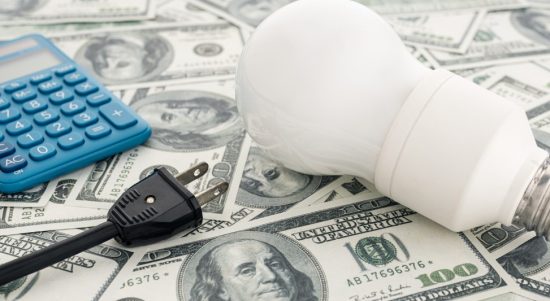Understanding the Energy Price Cap is essential for consumers seeking to navigate the complexities of the energy market in the United Kingdom. As an important regulatory measure, the Energy Price Cap aims to protect households from excessive energy costs while promoting fair pricing and competition among energy suppliers. In this guide, we delve into the intricacies of the Energy Price Cap, exploring its purpose, implementation, and implications for consumers across the country.
What is the Energy Price Cap?

The Energy Price Cap was introduced in the United Kingdom as part of efforts to regulate the energy market and ensure fair pricing for consumers. It is set by the energy regulator, Ofgem, and is reviewed and adjusted periodically to reflect changes in wholesale energy prices and other factors affecting energy costs.
The Energy Price Cap, also known as the Default Tariff Cap or the Standard Variable Tariff Cap, is a government-imposed limit on the maximum amount that energy suppliers can charge consumers for their gas and electricity on default or standard variable tariffs. The purpose of the price cap is to protect consumers, particularly those who have not switched their energy supplier or tariff, from paying excessively high prices for their energy.
How Does the Energy Price Cap Work?
Ofgem established the energy price cap, which regulates how much suppliers may charge customers for each unit of energy consumed. Both people using a prepayment tariff and those on their supplier’s default standard variable tariff will be directly impacted by this cap.
Every quarter, in January, April, July, and October, the energy price cap is adjusted.
The energy price cap is calculated by “typical values,” and assume that the average home uses 11,500 kWh of gas and 2,700 kWh of electricity per year.
Consequently, the cap does not represent the maximum potential cost of your energy bill, as bills will fluctuate based on household energy consumption.
Should your energy usage exceed typical levels, your bills may surpass the headline price cap. Furthermore, the price cap encompasses daily standing charges, representing fees for maintaining a connection to the energy supply. These charges vary by supplier and location within England, Scotland, or Wales.
The energy price cap applies within England, Wales, and Scotland. However, Northern Ireland operates under a different energy market structure and lacks an equivalent cap.
What are the Costs Included in the Energy Price Cap?

The costs included in the Energy Price Cap typically cover various components of supplying energy to consumers. These can include:
- Wholesale Energy Costs: This is the price suppliers pay to purchase energy from wholesale markets. It typically forms a significant portion of the overall cost.
- Network Costs: These cover the costs associated with transporting energy through the national grid and local distribution networks.
- Policy Costs: These include government-imposed levies and charges aimed at supporting renewable energy generation, energy efficiency initiatives, and other environmental policies.
- Operating Costs: These include the costs incurred by energy suppliers in administering and servicing their customers, such as billing, customer service, and regulatory compliance.
- Other Costs: These may include costs related to metering, meter reading, and any additional regulatory or industry charges.
The specific amounts allocated to each of these cost components can vary over time and are determined by the energy regulator, such as Ofgem in the UK. Additionally, the Energy Price Cap may also include a margin for suppliers to cover their profit and other overheads.
What Was the Energy Price Guarantee?
The Energy Price Guarantee (EPG) was implemented from October 1, 2022, until June 30, 2023, with the aim of capping the cost of energy for households in Great Britain. Under the EPG, a typical household paid approximately £2,500 per year for their gas and electricity. This measure was introduced to provide temporary relief to households amidst rising energy prices, serving as an alternative to the standard price cap.
As of the end of March 2024, the EPG remains in effect. However, with the standard price cap now set at a level below that of the EPG, the EPG is no longer applicable, and the price cap takes precedence in limiting the amount consumers pay for their energy bills.
Nevertheless, for consumers with prepayment meters, the EPG continues to offer a discount of approximately £40 annually on the price cap. This ensures that those using prepayment meters do not pay more for their energy than customers using direct debit payment methods, maintaining this benefit until March 31, 2024.
Can I Be Charged More Than the Energy Price Cap?

In most cases, you should not be charged more than the Energy Price Cap for your energy usage if you are on a default or standard variable tariff. The purpose of the Energy Price Cap is to set a maximum limit on the rates that energy suppliers can charge their customers for each unit of energy used. This cap is intended to protect consumers from paying excessively high prices for their gas and electricity.
- Exceeding Typical Usage: If your energy usage exceeds the typical values used to calculate the Energy Price Cap, your bills may be higher than the cap amount. The cap is based on assumed average usage levels, so households using significantly more energy may see higher bills.
- Additional Charges: While the Energy Price Cap covers the cost of energy itself, there may be additional charges on your bill that are not included in the cap, such as standing charges or fees for additional services. These charges are typically regulated separately and may vary between suppliers.
- Fixed-Term Tariffs: The Energy Price Cap applies primarily to default or standard variable tariffs. If you are on a fixed-term tariff or another type of contract, your prices may be different and not subject to the cap.
Overall, while the Energy Price Cap provides protection against excessively high energy prices for consumers on default tariffs, it’s essential to review your energy bills carefully and understand any additional charges or factors that may affect your overall costs. If you have concerns about your energy bills exceeding the cap, you can contact your energy supplier or seek advice from consumer advocacy organisations.
Conclusion
The Energy Price Cap stands as a significant regulatory mechanism designed to safeguard consumers from soaring energy costs and ensure fair pricing within the energy market. By setting a limit on the maximum rates that energy suppliers can charge, the Energy Price Cap provides peace of mind to households across the United Kingdom, particularly those on standard variable tariffs.
As consumers continue to seek affordable and reliable energy services, understanding the dynamics of the Energy Price Cap remains crucial for making informed decisions and managing energy expenses effectively in today’s dynamic energy landscape.






























